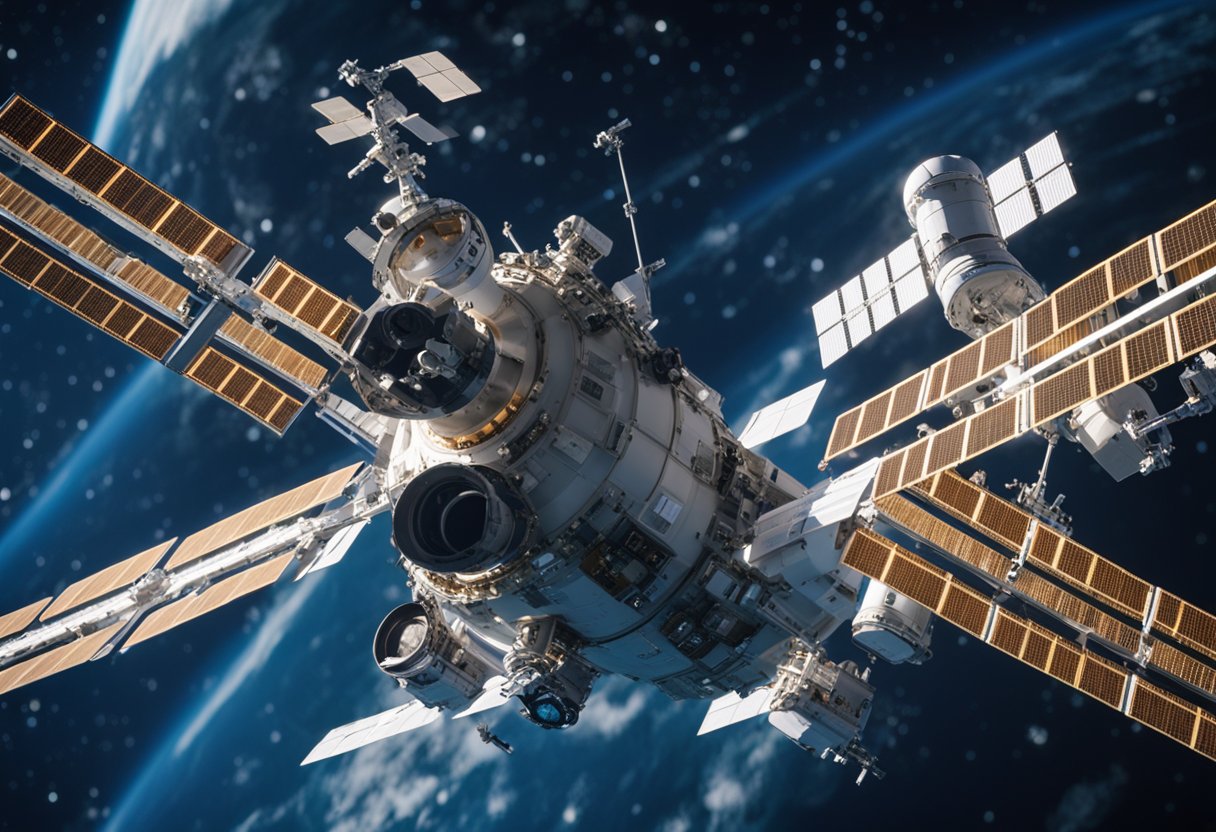
International Space Station Modules – The International Space Station, orbiting Earth with a crew of astronauts from around the globe, is made up of multiple interconnected modules, each serving unique functions critical to the station’s operations. These modules are the backbone of the ISS, providing living quarters for the crew, laboratories for scientific research, and docking stations for incoming spacecraft. Over the years, the station has grown with the addition of new modules, demonstrating an unparalleled feat of international cooperation and technological advancement in space.
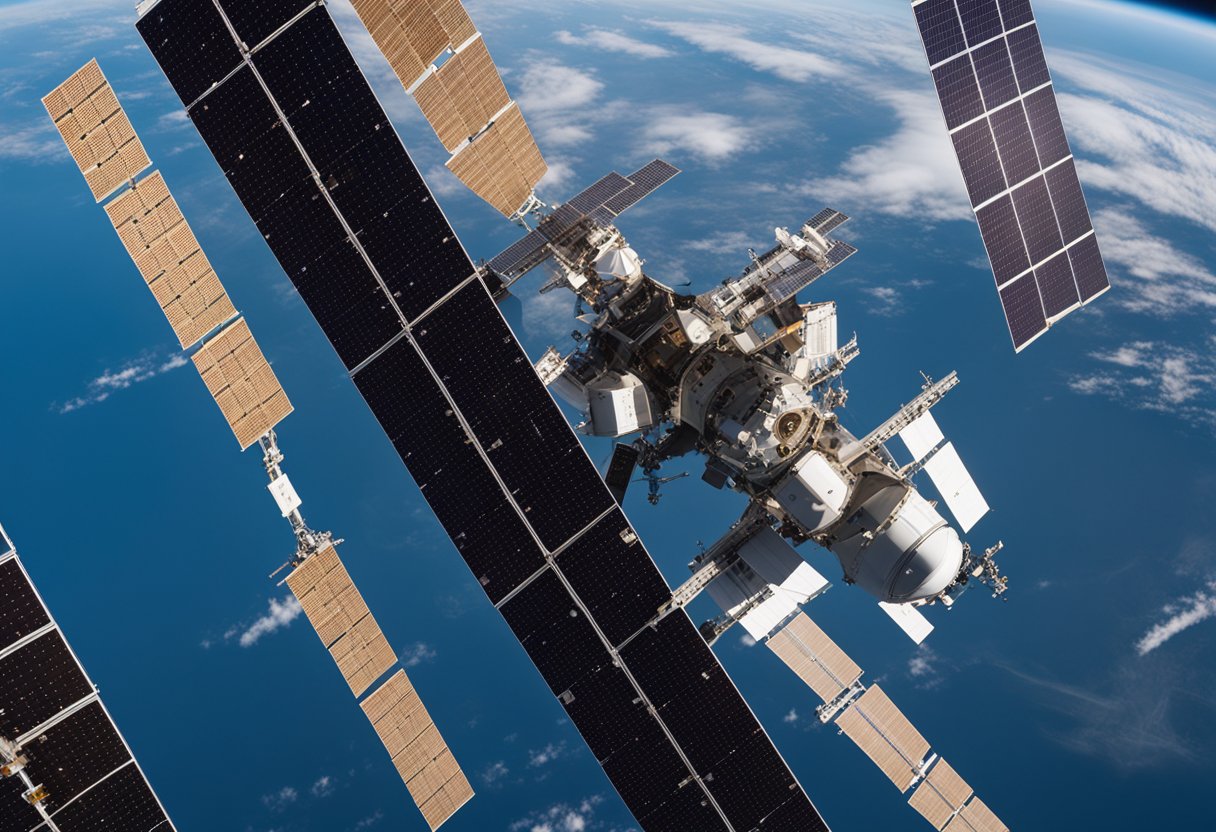
Our understanding of life and science in microgravity has been significantly enhanced by the modules aboard the ISS, which serve as both living space and advanced research facilities. Designed to sustain life away from Earth, they facilitate a range of activities from routine daily living to cutting-edge experiments. The station’s continuing maintenance and upgrades ensure that its importance to science and space exploration endures, further reinforcing the role of robotic systems and support, ensuring the safety and efficiency of operations.
The International Space Station (ISS) represents an unparalleled collaboration between multiple space agencies, bringing to life a modular habitat for long-term space exploration. Throughout its history, the Station has been assembled piece by piece, entailing sophisticated engineering feats and international cooperation.
Initial plans for an internationally-manned orbiting laboratory began in the 1980s, culminating in the formation of a global partnership encompassing NASA, Roscosmos, ESA, and several other agencies. We committed to sharing responsibilities and resources, setting the stage for the most complex international scientific cooperative project in history.
The first module, Zarya, funded by the United States but built by Russia, was launched in 1998. It provided the initial propulsion and power needed for the ISS. Shortly thereafter, the Unity module, the inaugural U.S.-built component, took to the skies aboard the STS-88 mission. This marked the beginning of the ISS assembly in orbit.
The space shuttle fleet, particularly the Space Shuttle Endeavour, played an essential role in the ISS construction, ferrying components and astronauts to orbit. Our endeavours with the space shuttles enabled the intricate process of adding modules and expanding the Station’s capabilities, an effort that continued until the shuttle program’s conclusion in 2011.
Through our joint efforts, the ISS has become a symbol of cooperative space exploration, advancing scientific knowledge and possibly paving the way for future space tourism endeavours as envisioned by platforms like SpaceVoyageVentures.com.
The International Space Station (ISS) is a marvel of modern engineering and international collaboration. Its core modules serve as the foundation for the entire structure, each contributing vital capabilities that enable the ISS to function as a habitable artificial satellite and a microgravity research laboratory.
Zarya, also known as the Functional Cargo Block or FGB, was the first module of the ISS, launched in 1998. As the initial module, Zarya provided the ISS with crucial storage space and a propulsion system, which was vital for maintaining the station’s orbit during the early stages of assembly. Zarya also contains the docking ports used for incoming Russian modules and Progress resupply vessels.
Unity, the second module and the first American module of the ISS, is also referred to as Node 1. We launched Unity in 1998 and connected it to Zarya. This module serves as a passageway connecting living and working areas of the station. It also provides docking ports for SpaceX Crew Dragon, Northrop Grumman Cygnus, and visiting space shuttles in the past. The Unity Module has been a pivotal part of the space station, enabling the attachment of additional modules and components.
The Zvezda Service Module was added to the ISS in 2000 and has been the cornerstone of the station’s life support and living quarters for the crew. It provides all necessary life support systems, including oxygen generation, carbon dioxide removal, and waste management. It is also equipped with a two-directional data relay that allows communication with ground control. Zvezda’s arrival meant that long-duration habitation of the ISS could begin. The module features sleeping quarters and the main engine used for reboost manoeuvres.
Launched in 2001, the Destiny Laboratory Module, also known simply as Destiny, is the primary research facility for U.S. payloads. It houses a wide array of experiments and research instruments that allow astronauts to perform cutting-edge experiments in a variety of scientific disciplines. Destiny’s role is scientific research, facilitated by its state-of-the-art laboratory equipment and racks that can be swapped out to accommodate different experiments and studies. Destiny is also equipped with a window that affords researchers and astronauts a view of Earth, useful for both research and leisure.
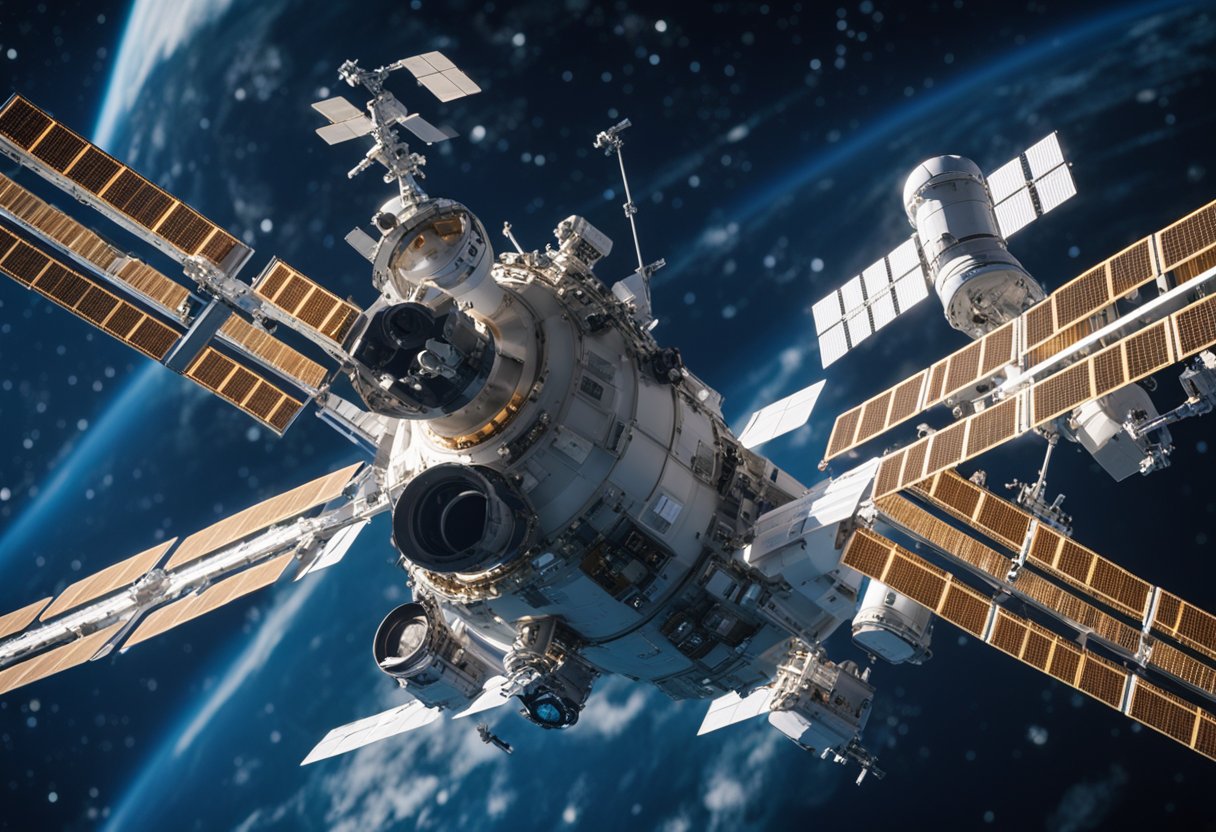
The International Space Station (ISS) represents a pinnacle of international collaboration in space, with modules contributed by space agencies worldwide. These modules facilitate research, habitation, and operations in Earth’s orbit. We will explore some specifically contributed by key international partners and how commercial partnerships are expanding the ISS’s capabilities.
The Columbus Laboratory is the European Space Agency’s (ESA) largest single contribution to the ISS. It serves as a versatile science laboratory for European researchers to conduct experiments in life sciences, materials science, and other research fields. Since the laboratory’s attachment to the ISS in 2008, it has helped Europe garner a significant presence in space.
The Kibo module, also known as the Japanese Experiment Module (JEM), is Japan’s primary contribution to the ISS, delivered by the Japan Aerospace Exploration Agency (JAXA). This extensive module includes a pressurised section for experiments, an exposed platform to expose experiments to the vacuum of space, and a logistics module for storage.
Russia has provided several core modules for the ISS, including Zvezda and Zarya, which formed the foundational structure for the station. The most recent additions, Nauka and Rassvet, have expanded the station’s capabilities with new scientific facilities and docking ports, reflecting Russia’s ongoing commitment to the ISS.
As the ISS evolves, commercial partnerships are becoming increasingly vital for its operation and future expansion. Private companies are now integral for transporting crew and cargo to the ISS. With the introduction of international docking adaptors, the station is equipped to welcome spacecraft from commercial partners, signalling a new era in space exploration that even includes space tourism initiatives like those catalogued by SpaceVoyageVentures.com.
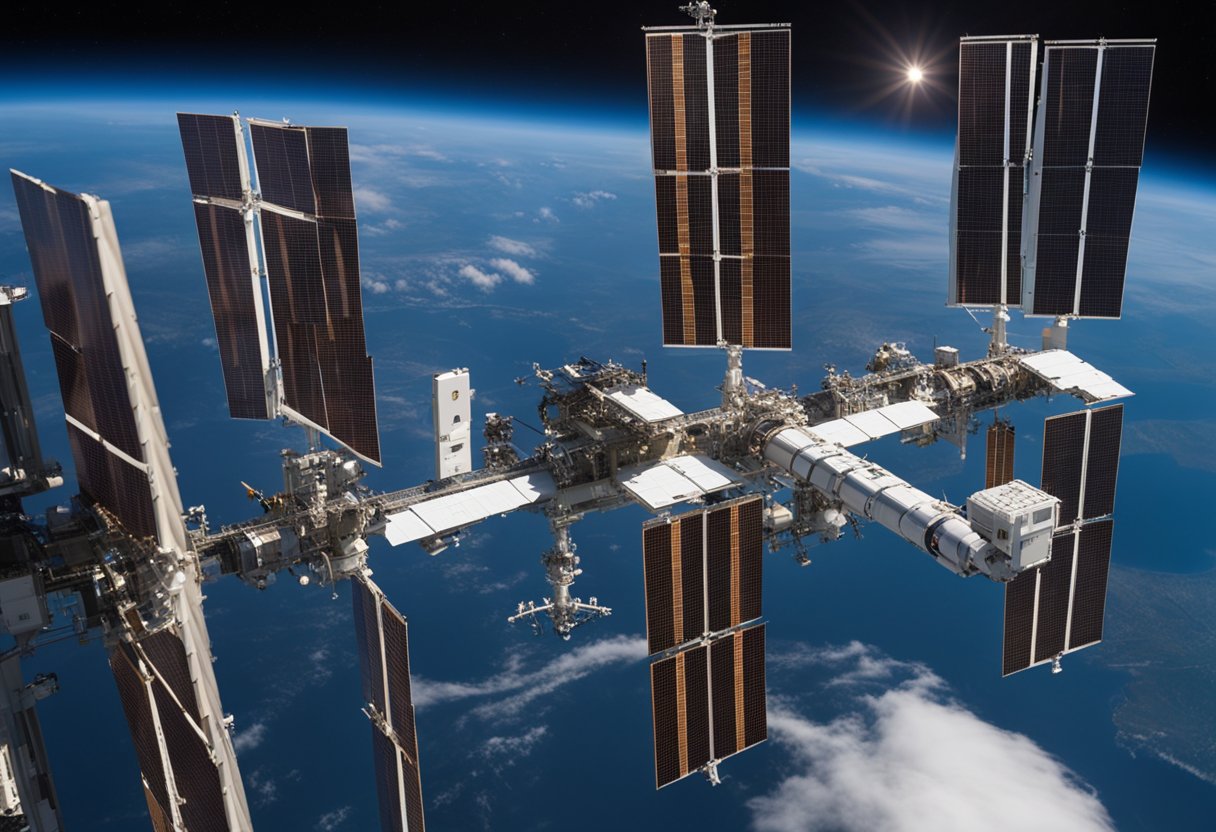
Within the confinements of the International Space Station (ISS), a multitude of multifaceted science and research facilities operate. These are dedicated to the advancement of scientific knowledge across various disciplines, taking advantage of the unique microgravity conditions.
The ISS boasts several state-of-the-art laboratories, including the US Destiny laboratory, which has been pivotal in conducting a range of scientific research since its arrival in orbit in 2001. The European Space Agency’s Columbus module is another core facility that has enabled a multitude of experiments in life sciences, physical sciences, materials science, and various other fields.
The microgravity environment on the ISS presents a unique opportunity for biological research where cellular and molecular behaviour can be studied without Earth’s gravitational pull interfering. This has paved the way for groundbreaking research in biology and has deepened our understanding of the fundamental processes that may differ significantly from those on Earth.
Positioned on the ISS is the Alpha Magnetic Spectrometer (AMS), an advanced particle physics experiment. The AMS searches for various types of unusual matter as it analyses cosmic rays, an endeavour that could not be undertaken with such precision anywhere other than the expanse of space, providing invaluable data that expands our grasp on the cosmos and the origins of the universe.
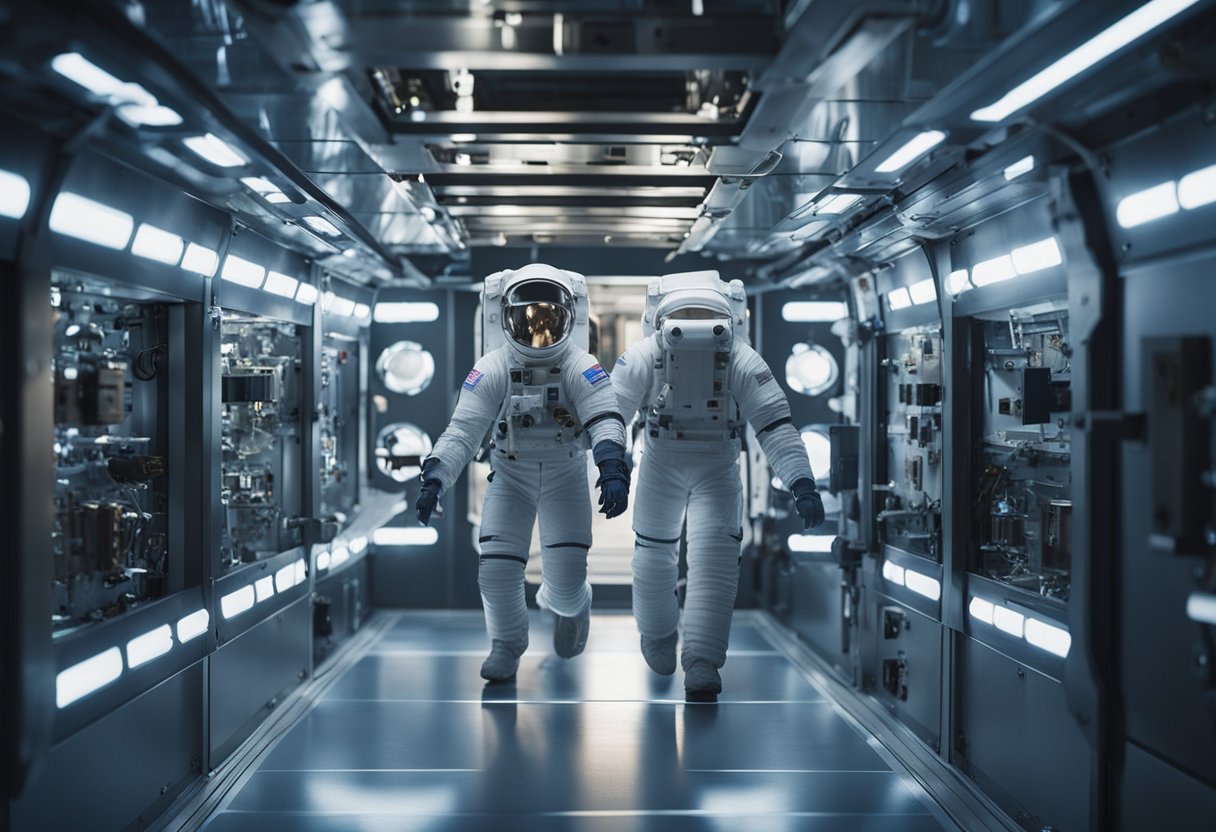
In the unique microgravity environment of the International Space Station, daily life for us astronauts involves routines that cater to our health, well-being, and the necessities of life in space. We’ll explore the living quarter’s accommodation, how we maintain our physical health through exercise, and the process of preparing meals.
Our habitation module in the ISS provides a comfortable living space that’s akin to a large six-bedroom house, offering each crew member a personal sleeping quarter and shared amenities such as two bathrooms and a 360-degree view bay window. Workstations and scientific labs are also an integral part of our living area, where we spend a majority of our time conducting experiments and managing station operations.
To combat the effects of microgravity on our bodies, we engage in two hours of exercise daily using specialised equipment, including a treadmill, a cycle ergometer, and resistance machines designed to operate in weightlessness. Regular exercise is crucial for maintaining our muscle mass, bone density, and cardiovascular health, ensuring that we remain fit and healthy during our mission duration.
Mealtime aboard the ISS is an orchestrated affair, where we carefully prepare our food using rehydratables and thermostabilised pouches, ensuring we’re consuming the right balance of nutrients. We use a variety of international dishes and a galley equipped with a food warmer, while fresh fruit and sometimes, even treats like ice cream, are resupplied periodically by cargo missions to give us a taste of home while we orbit the Earth.
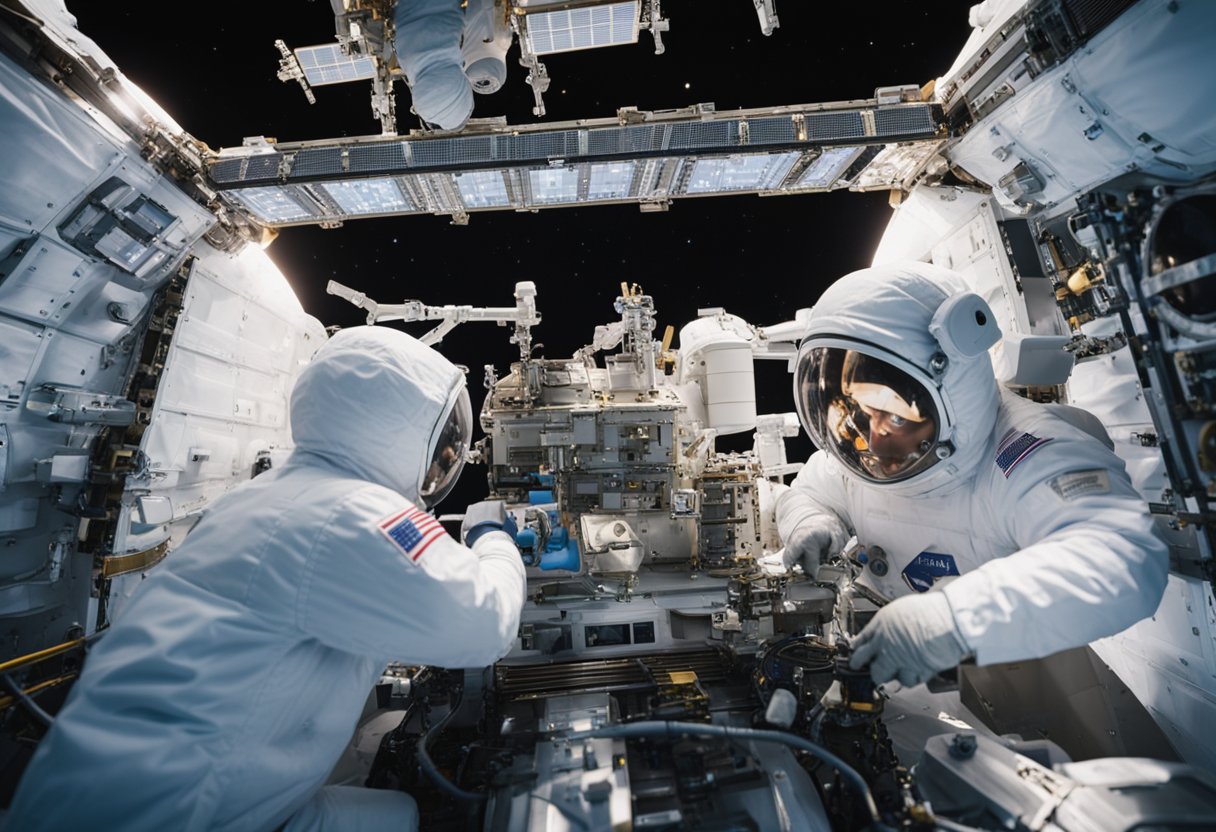
Station maintenance and upkeep are fundamental for the smooth operation of the International Space Station (ISS). We ensure that the modules like Tranquility remain operational through regular repairs and upgrades, coordinate supply missions to deliver necessary materials, and conduct spacewalks to address external maintenance needs.
We consistently perform repairs and upgrades within the ISS to guarantee the functionality and safety of all on-board systems. Maintenance tasks include software updates, hardware replacements, and troubleshooting any irregularities that may occur. For instance, the Tranquility module accommodates many of the life support systems of the ISS, and keeping it up-to-date is essential for our crew’s well-being.
Supply missions are critical in providing the station with food, equipment, research materials, and other necessary supplies. These missions require intricate logistical planning to ensure timely delivery and proper storage of supplies. Expedition teams often rehearse the complex task of unloading cargo, which is a carefully choreographed process to guarantee that every item reaches its designated place on the station correctly and efficiently.
Spacewalks, or extravehicular activities (EVAs), are integral to the external maintenance of the ISS. Our astronauts are rigorously trained for these operations, which may include repairing the station’s structure, upgrading external equipment, or installing new hardware. Spacewalks are not only critical for immediate repairs but also play a vital role in preparing the ISS for future expeditions and long-term sustainability.
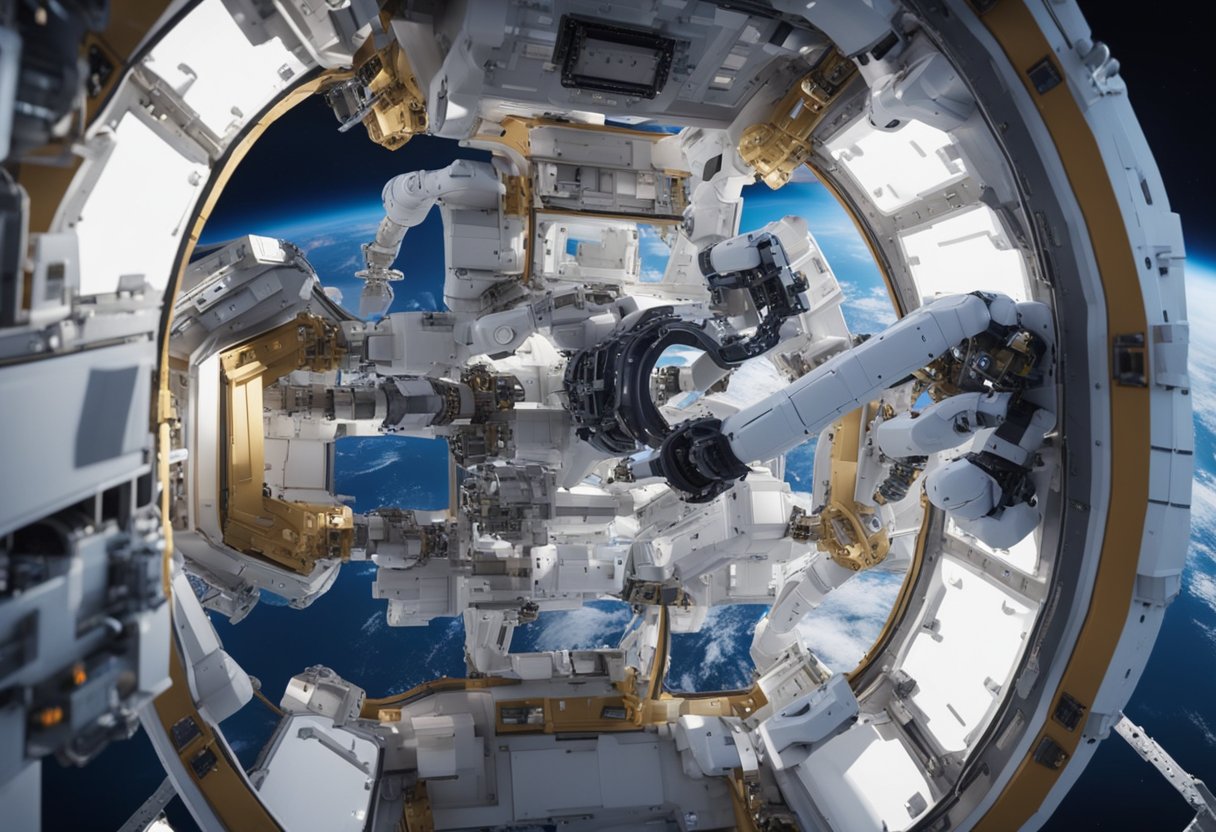
Within the complex structure of the International Space Station (ISS), robotic systems play a pivotal role in its operation and maintenance. We rely on sophisticated robotics for tasks ranging from carrying cargo to inspecting the spacecraft’s exterior.
The Mobile Servicing System (MSS), known as Canadarm2, is a highly versatile robotic arm—Canada’s contribution to the ISS. Since its launch in April 2001, Canadarm2 has been crucial for manoeuvring equipment and supplies, assisting with docking procedures, and performing ‘cosmic catches’ of visiting spacecraft.
Coupled with Canadarm2 is Dextre, or the Special Purpose Dexterous Manipulator, which was launched into space in March 2008. Together, they form a reliable duo that can perform intricate tasks and repairs outside the station, reducing the need for astronaut spacewalks.
Automated Transfer Vehicles (ATVs) were unmanned spacecraft designed by the European Space Agency to supply the ISS. They carried necessities such as food, water, and fuel, autonomously docking with the space station. Though the ATV programme has concluded, it marks an important historical step in robotic support in space operations.
A newer addition to the ISS is the Nanoracks Bishop Airlock, the first commercial airlock module for the space station. It not only supports satellite deployment but also enables cargo transfer and external station assembly. We see this as a pioneering element, facilitating both governmental and private sector missions to the ISS.
We continue to develop and integrate state-of-the-art robotic systems to assist with our operations on the ISS, ensuring efficiency and safety for our astronauts and paving the way for future endeavours in space exploration.
Transportation to and from the International Space Station (ISS) is an intricately coordinated process involving various spacecraft, each with their own docking mechanisms and protocols. These vehicles are essential for the delivery of crew and cargo, as well as the maintenance of the ISS infrastructure.
Soyuz spacecraft are a critical component of ISS operations, regularly ferrying cosmonauts and astronauts to and from the station. They utilise the Proton rockets for launching and traditionally dock at the Russian segments of the ISS. Progress cargo vessels, which are automated versions of the Soyuz, deliver supplies and equipment necessary for the survival and functionality of the station’s crew.
The US contributes to the transportation infrastructure with the Commercial Crew Program. SpaceX’s Crew Dragon has become a vital element of this initiative, allowing us to transport astronauts to the ISS, leveraging its advanced docking system compatible with the station’s International Docking Adapters on the Harmony module. Cargo is also transported by the SpaceX Dragon as well as other commercial vehicles, enhancing our logistical capabilities and research potential on the ISS.
Europe’s contribution to ISS logistics includes the Automated Transfer Vehicle (ATV), which provides cargo delivery, station re-boost, and waste disposal services. Though the ATV program has concluded, it set standards for complex interactions with the ISS, including automated docking procedures with the Russian segment’s docking ports and the utilisation of a space-proven automated docking system.
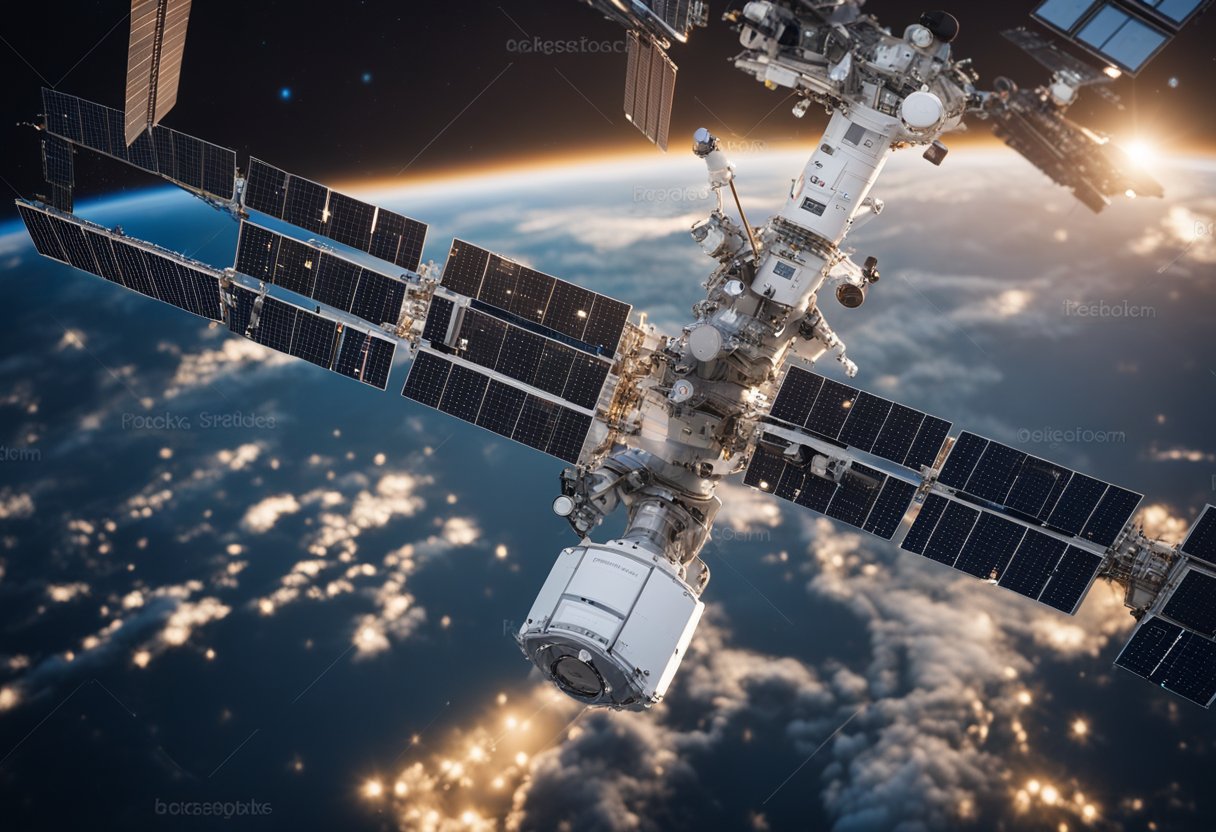
In this section, we address some of the most common inquiries regarding the International Space Station’s modules, exploring their manufacturing origins, accommodation provisions, assembly order, primary functions, structure, and construction materials.
The modules of the International Space Station (ISS) are a cooperative effort, produced by a consortium of space agencies including NASA, Roscosmos, JAXA, ESA, and CSA. Each agency contributes components built by various aerospace companies within their respective countries.
Astronauts are accommodated in pressurised modules that provide living quarters and workspaces equipped with life support systems. These systems regulate the atmosphere, manage waste, provide water and food, and ensure astronauts have all necessary resources to live and work comfortably in space.
The assembly of the ISS began with the launch of the Russian module Zarya in 1998, followed by the US Unity module. The construction continued in a carefully planned sequence, which saw the addition of laboratories, living quarters, and support modules over the years to create the complex structure that orbits Earth today.
The ISS serves as a microgravity and space environment research laboratory where scientific research is conducted in astrobiology, astronomy, meteorology, physics, and other fields. It also supports the testing of spacecraft systems and equipment required for long-duration missions to the Moon and Mars.
The ISS is a sizable construction with a pressurised volume equivalent to that of a Boeing 747 plane, boasting an extensive structure when its solar arrays are included. Its modular architecture enables the addition of new components and facilitates repairs and upgrades.
Materials used for constructing the ISS modules must endure the harsh conditions of space. They include high-strength aluminium alloys, stainless steel, titanium, Kevlar, and other advanced composites designed to protect against micrometeoroids and minimise thermal fluctuations.